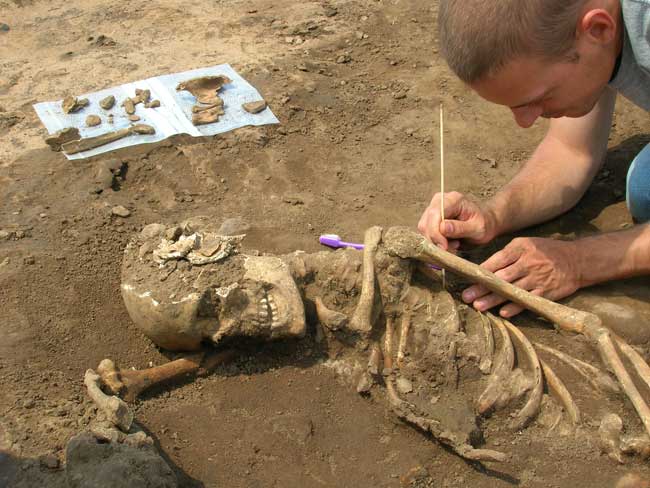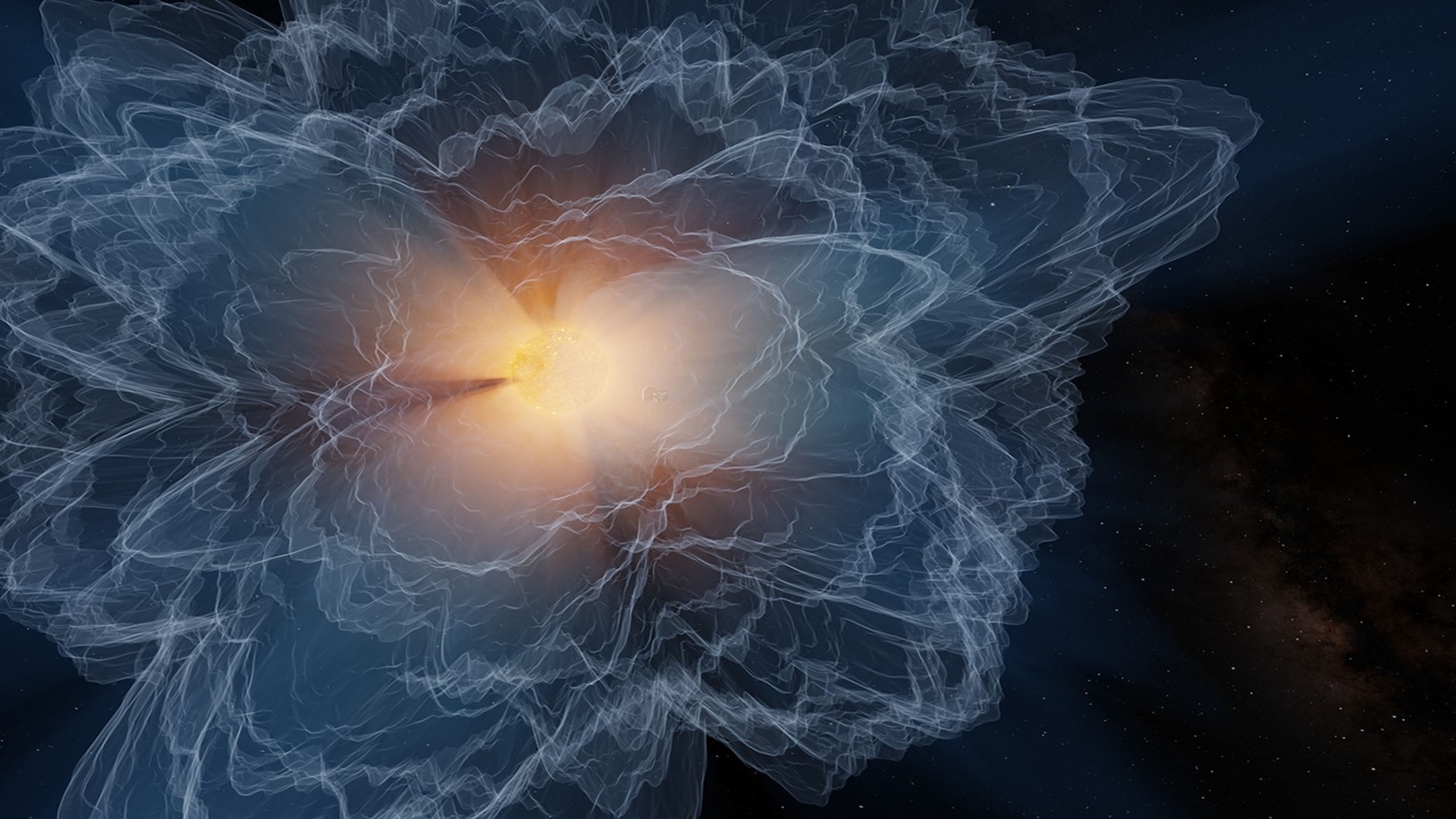Skeleton May Be Early TB Victim

The skeleton of a man discovered in a shallow grave on what is now a college campus in England could belong to one of Britain’s earliest victims of tuberculosis. Radiocarbon dating suggests the man died in the fourth century, around A.D. 302, when Romans ruled the region. He was interred in a shallow scoop in a flexed position, on his right side. The man, aged 26 to 35 years old, suffered from iron deficiency anemia during childhood and at 5-foot, 4-inches, was shorter than average for Roman males. The first known case of TB in Britain is from the Iron Age (300 B.C.), but cases in the Roman period are fairly rare, and largely confined to the southern half of England. TB is most frequent from the 12th century A.D. in England when people were living in urban environments. So the skeleton may provide crucial evidence for the origin and development of the disease in this country. The burial site The remains were discovered during archaeological investigations earlier this year on the site of the University of York's expansion at Heslington East. Archaeologists unearthed the skeleton close to the perimeter of the remains of a late-Roman, high-status masonry building discovered on the site, close to the route of an old Roman road between York and Barton-on-Humber. The burial site is on part of the campus that will not be built on. The University is developing plans for community archaeology and education visits once the investigations are complete. Detailed analysis of the skeleton by Malin Holst of York Osteoarchaeology Ltd., commissioned by University of York to do the work, revealed that a likely cause of death was tuberculosis. A report on the analysis was made public this week. "Severe destruction of the vertebrae in the lower spine, as well as fusion of the sacrum to the pelvis suggests a diagnosis of gastrointestinal tuberculosis, which is currently being tested using DNA analysis," Holst wrote in her report. "It is likely that the severity of the infection would have proved fatal." About TB Gastrointestinal TB is caused by the Mycobacterium bovis bacterium. It can enter the body when we eat meat or milk from infected cattle, and then make its way to the gut. Today, Mycobacterium tuberculosis, which infects people via their airways, is more common. One third of the world's population is currently infected with M. tuberculosis. The disease affected the man’s spine and pelvis. It is possible that the man had contracted the disease as a child from infected meat or milk from cattle, but the infection also could have been inhaled into the lungs, she said. The disease then lay dormant until adulthood when the secondary phase of the disease took its toll. "This was a remarkable find and detailed study of this skeleton will provide us with important clues about the emergence of tuberculosis in late-Roman Britain, but also information about what life was like in York more than 1,500 years ago," said Heslington East Fieldwork Officer Cath Neal, of the University’s Department of Archaeology. "A burial such as this, close to living quarters, is unusual for this period when most burials were in formal cemeteries," she said. "It is possible that the man was buried here because the tuberculosis infection was so rare at the time, and people were reluctant to transport the body any distance." The details "There were signs of muscular trauma and strong muscle attachments indicating that the individual undertook repeated physical activity while he was in good health," Holst said. "There was some intensive wear and chipping on his front teeth which may have been the result of repeated or habitual activity. There was evidence for infection of the bone in both lower limbs but this appeared to be healing at death." The investigation of the remains is ongoing. Charlotte Roberts of Durham University and Terry Brown at Manchester University are studying DNA from the skeleton as part of National Environmental Research Council funded research into the origin, evolution and spread of the bacteria that causes TB in Britain and parts of Europe.
- Top 10 Ways We Deal with the Dead
- Top 10 Ancient Capitals
- Quiz: Artifact Wars
Get the world’s most fascinating discoveries delivered straight to your inbox.



